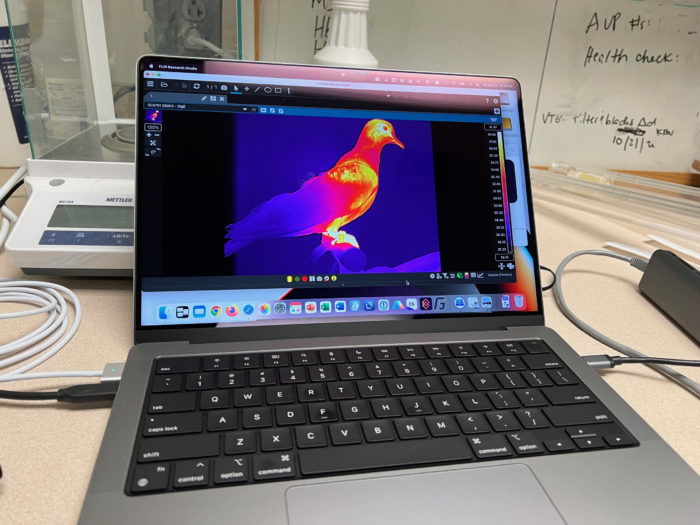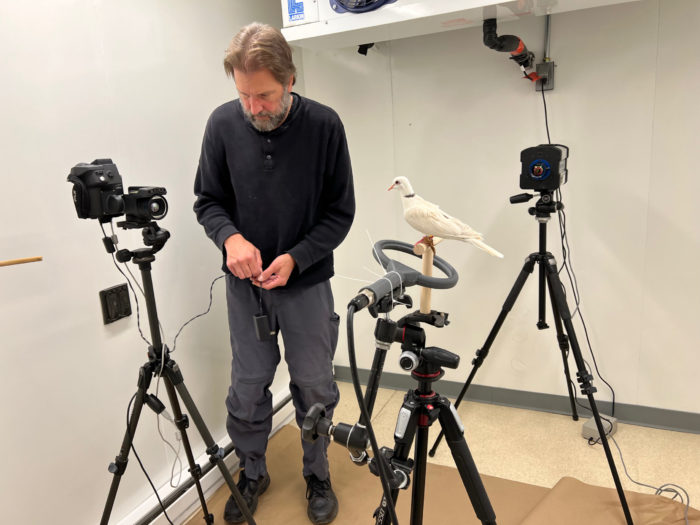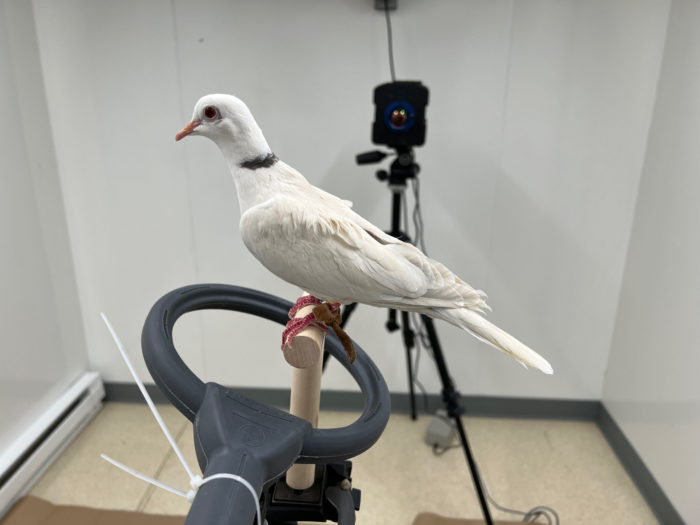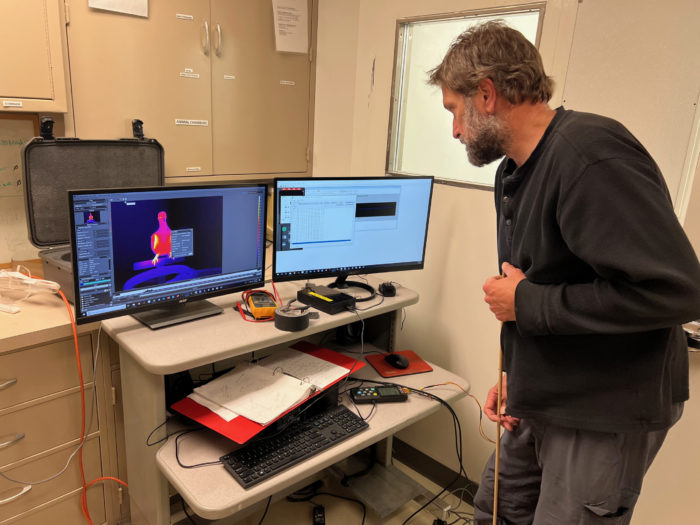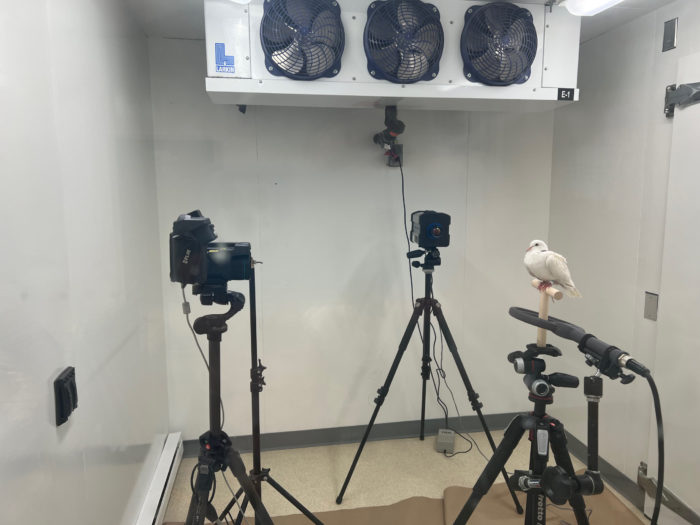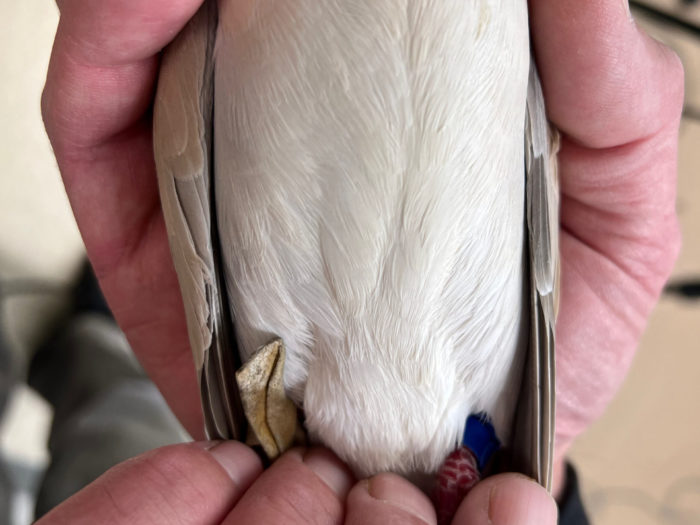Don traveled to the University of Montana to some quick experiments with friend and collaborator Dr. Bret Tobalske. For the first time they will be working solely with Eurasian collared doves to 1) begin expansion of their heat dissipation during flight work to non-hummingbirds, and 2) test whether or not gluing thermal pit tags to the skin over the flight muscles is an effective way to measure skin surface temperature beneth the breast plumage. The doves were also large enough that they could insert a thermal pit tag into the dove’s abdominal cavity to measure core body temperature. The goal will be to simultaneously measure core body temperature and skin surface temperature above the flight muscles using the thermal pit tags, and breast plumage surface temperature over the flight muscles using infrared thermography. Measurements were made both for flight and perching. The goal is to gain a better understanding of how rapidly core body heat moves across the plumage for dissipation into the environment.
 Nature
Nature Science
Science AJP – Regulatory, Integrative and Comparative Physiology
AJP – Regulatory, Integrative and Comparative Physiology- Electroneutral Na+/Cl− cotransport activity of zebrafish Slc12a10.1 expressed in Xenopus oocytes July 24, 2024
- Heavy-intensity priming exercise extends the V̇o2max plateau and increases peak-power output during ramp-incremental exercise July 24, 2024
- Actigraphy-based sleep and muscle sympathetic nerve activity in humans July 24, 2024
Powers Lab Links

